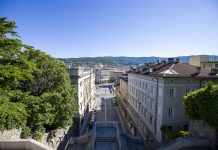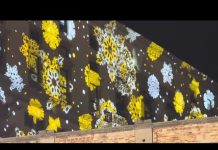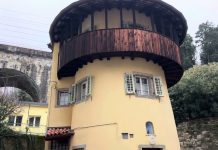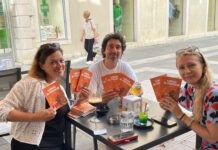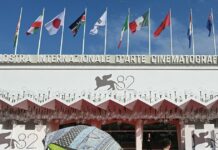by Nina Vaclavikova
Interviews: FVG councilor for culture, Mario Anzil; Patrizia Artico, councilor for the European capital of culture in Gorizia
With Gorizia and Nova Gorica serving jointly as the European Capital of Culture in 2025, regional officials have presented a trilogy of international photography exhibitions designed to highlight the area’s expanding cultural reach. The initiative, they noted, reinforces Gorizia’s emerging role as an international platform for contemporary photography and cross-border artistic dialogue.
“Thanks in part to the prestigious role of GO!2025, Gorizia is becoming an international and strategic platform for photography,” said Mario Anzil, the vice governor of Friuli Venezia Giulia with responsibility for culture. Speaking in Trieste at the unveiling of the three exhibitions, he added that their unified presentation reflects “a clear ambition to strengthen Friuli Venezia Giulia as a place of cultural production and European exchange.”
The trilogy — Dove gli occhi non arrivavano, Back to Peace? La guerra vista dai grandi fotografi Magnum, and Tre sguardi. Racconti fotografici inediti per GO!2025 — is being staged across three venues: the Santa Chiara exhibition space, Palazzo Attems Petzenstein, and the newly renovated Casa Morassi.
Developed through a wide international partnership led by the regional government and ERPAC FVG, and produced by Suazes with Magnum Photos, the exhibitions feature curatorial direction by Andrea Holzherr and Marco Minuz, who joined the presentation remotely. Gorizia’s city councillors Patrizia Artico, responsible for the European Capital of Culture, and Fabrizio Oreti, responsible for culture, also attended, along with ERPAC FVG director Lydia Alessio Vernì.
Anzil emphasized that the trilogy’s value lies in its ability to turn historical memory into a catalyst for contemporary cultural innovation. “The events that have shaped Europe — and particularly Gorizia and the Isonzo region — reappear in these exhibitions as tools for interpreting the present,” he said. Exploring border culture, he added, means understanding how a territory becomes a narrative and how a frontier can shift from barrier to opportunity. The symbolic locations chosen for the exhibitions underline Gorizia’s enduring role as a bridge between political history, artistic inquiry, and new forms of expression.
Together, the three exhibitions — one of which, Tre sguardi, opened in October — create a cohesive journey through the region’s history, identity, and present-day realities. Featuring more than 20 international photographers and over 300 images, supported by video installations, archival materials, and previously unpublished reportage, the trilogy spans themes from the Basaglia psychiatric reform to the experiences of war and peace captured by Magnum photographers, and contemporary reimaginings of the border.
The exhibition dedicated to Franco Basaglia, hosted at the Santa Chiara Museum (November 29, 2025–May 3, 2026), revisits the psychiatrist’s groundbreaking approach to mental health. It includes video testimonies from its three authors, among them the late Gianni Berengo Gardin. The installation aims to reinterpret the Santa Chiara spaces through an updated, immersive path.
Back to Peace?, opening at Palazzo Attems Petzenstein (December 20, 2025–May 3, 2026), brings together 18 renowned photographers in 220 works, accompanied by documents and projections. Supported by Magnum Photos, New York’s International Center of Photography — which houses the Robert Capa archive — and the Henri Cartier-Bresson Foundation, the exhibition explores the immediate post–World War II years and the uncertain return to peace, offering a poignant reflection on a period that continues to inform the present.




